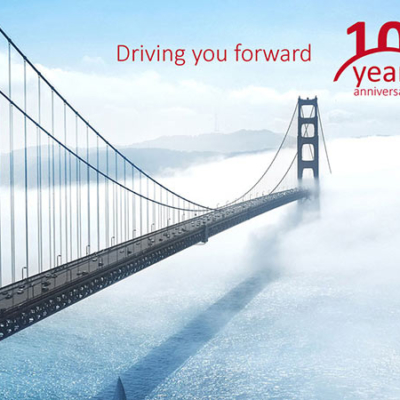
ERP and MRP sound so similar that many people think them as systems which are using for same reasons. However, these two systems have different purposes. Let’s take a closer look at these two systems in the manufacturing industry.

Whenever you talk about manufacturing businesses, no matter whether discrete or process manufacturing, the terms Enterprise Resource Planning (ERP) and Material Requirements Planning (MRP) invariably come into discussion. In fact, the acronyms ERP and MRP sound so similar that many people confuse them as each other’s substitute. However, even as these two terms appear quite identical, the two systems are completely different to each other in reality. Each have their own utility, advantages, as well as disadvantages to the businesses. Through this blog, we will take a look at the two systems, and their pros and cons. Let’s see the definitions of the two systems first.
An ERP system can be defined as an IT tool that integrates all the core processes of a business into a single system, allowing the business to collect and manage data from its different activities. Through its set of modules, ERP integrates the different core functions of a business like finance, manufacturing, supply chain, purchase, sales, vendor, planning etc. and brings them on the same page, in a single system. As a result, there’s a flow of real-time information across the different departments, which provides the business executives with a foundation to make data-driven and accurate business decisions.
By becoming a single unified package, ERP system rids businesses of disparate systems and processes. It centralizes the entire business data at a single place, giving the employees authorized access to the single-yet-shared database. An ERP software automates the business, enables generation of synchronized reports on key business metrics, streamlines the processes, and improves overall business productivity.
On the other hand, an MRP system can be defined as a tool that helps the manufacturers plan for the materials they are likely to need for production, when they might need it, and in what quantity they will need it. Unlike an ERP software, a material requirements planning system is exclusively used to help manage manufacturing processes, as businesses use this software to plan their production, calculate the raw material quantity required, forecast, and order raw materials. This way, they have the right material available in the right quantity at the right time and on right date for production.
A standalone system, MRP is also typically one of many modules of an ERP software, and predominantly deals with the inventory management & production scheduling areas of the business.
Pros and cons of the ERP system
Knowing what exactly the ERP and MRP systems are, and what they can do for a manufacturing business, makes it easier to proceed towards their pros and cons.
Let’s first discuss the pros of an ERP system;
To begin with, an ERP software gives the manufacturers real-time access to accurate business-critical information. This improves communication between different business units, as they can access the data from common database and share the information amongst each other in a timely manner. This results in reduced risk of error, enhanced coordination, and eventually, increased productivity. Additionally, ERP system also ensures secure and better organized data. Also one of ERP software’s many advantages is enhanced business productivity. Integrating an ERP system into a business allows it to automate its different processes and significantly optimized use of the resources, namely men, machine, money, and time, previously wasted when such processes required human attention.
Implementing an ERP software also reduces costs & risks. It basically integrates and streamlines the different business processes, which in turn reduces the operational and management costs. Whereas, improved data integrity and financial control reduce overall business risks.
In addition, ERP improves decision making. The quick availability of accurate and consistent data from across the business functions, coupled with the ability to perform quality analysis & reporting, empowers the businesses. As a result, important decisions pertaining to the stock levels, manpower requirement, finance-related matters, etc. can be made quickly.
Now let’s take a look at the cons of an ERP system;
First things first, an ERP system requires high investment upfront. The implementation part too is complex and time consuming too, something that all the manufacturing businesses aspiring to have an ERP must take note of. Also transferring all the data from the present system to ERP can be an exhaustive process. Another thing with the ERP software is that they seem difficult to use by the workforce. The organization that opts for ERP implementation must ensure that the team working on the project imparts proper training to people who are going to work on the new system, as it will modify the entire existing structure of the business.
Another downside of an ERP system is that it doesn’t give immediate results after implementation. It works in the best interests of the business, but in the longer run. To avail its benefits, the businesses need to be patient, as it takes a while before its presence becomes more evident.
Then there are other cons of having an ERP system, such as vendor lock-in, as the organization becomes dependent on the vendor for future upgrades and customizations post implementation, and additional expenditures on new IT infrastructure, etc.
Pros and cons of the MRP system
What separates an ERP system with an MRP system is perhaps the fact that while ERP is an integrated software, MRP is a standalone system that functions by itself with only manufacturing-related features. To begin with, the pros of an MRP system include the ability to optimize the inventory levels. It lets the manufacturers know which raw material is required for production, how much of it is needed, when is it required, and from which source can it be purchased.
This way, the manufacturers can maintain only as much inventory required, and thus reduce carrying as well as rental costs on warehousing. Materials requirement planning system also helps with forecasting, which helps manufacturers to better plan sales, purchasing activities and delivery schedules. Other pros of materials requirement planning system include on-time availability of the right materials for production, timely shipment of manufactured goods to the customers, and optimal use of machines and equipment, among others.
The cons of having an MRP systeminclude heavy reliance on accurate input information. If there’s any inaccuracy in the numbers or data being fed into the system, the entire process of planning and forecasting can go for a toss, and there can be issues such as excessive order quantities and even scheduling delays.
Which one does your business need – ERP or MRP?
You now know what an ERP system is, and what are its advantages and disadvantages. Same goes for the material requirements planning system. If you are now faced with the question, as to which one of the two does your business need, you need to consider a few factors such as the industry you are operating into, the size of your business, your business processes, your budget, number of users, etc. The final choice, however, rests on your unique business requirements.
Get 2019 ERP Pricing: 45 different ERP systems profiled including Epicor, Microsoft, SAP and more. Click to download your free guide.




















